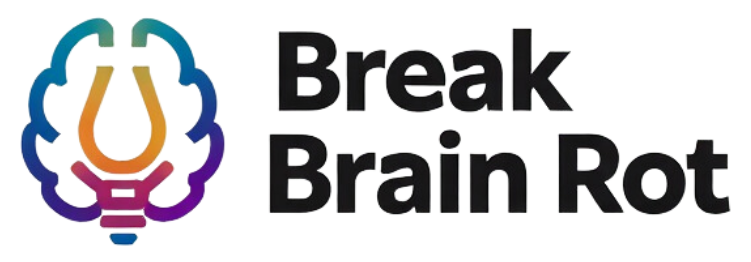In today’s hyper-connected world, constant pings, notifications, and digital distractions flood your mind with quick bursts of dopamine. While these little hits may feel rewarding in the moment, they can leave you unfocused, restless, and mentally drained. If you’ve ever caught yourself endlessly scrolling, procrastinating, or struggling to concentrate, learning how to do a dopamine detox could be the reset your brain has been craving. This simple yet powerful practice can help you regain focus, reduce procrastination, and rebuild your mental discipline — without relying on extreme measures. Let’s explore how you can step away from dopamine overload and sharpen your mind.
Table of Contents
- What is a Dopamine Detox?
- The Science Behind Dopamine and Focus
- How to Do a Dopamine Detox Step-by-Step
- Common Mistakes to Avoid During a Dopamine Detox
- Long-Term Benefits of Dopamine Detox
- FAQs
- Conclusion
What is a Dopamine Detox?
Defining the Concept
A dopamine detox is a voluntary break from activities that provide excessive and instant pleasure, with the goal of lowering overstimulation and regaining control of your focus. Contrary to popular belief, it doesn’t involve completely removing dopamine from your body — that’s impossible and unhealthy, since dopamine is a critical neurotransmitter for survival. Instead, it’s about reducing activities that create unnatural spikes, allowing your brain’s reward system to find balance again.
Myths vs. Facts
- Myth: You can “reset” your dopamine levels completely. Fact: You can’t restart your brain chemistry, but you can reduce overstimulation so that normal rewards feel fulfilling again.
- Myth: You must avoid all pleasurable activities. Fact: The aim is moderation, not deprivation.
Why People Are Turning to Dopamine Detox
With ever-present smartphones, addictive apps, and streaming platforms, many people find it hard to focus even on important tasks. A dopamine detox offers a structured way to step back and reclaim mental clarity. In fact, studies from Harvard Medical School suggest that managing reward-system stimulation can improve both mood and focus.
The Science Behind Dopamine and Focus
Understanding Dopamine’s Role in Motivation and Reward
Dopamine is a chemical messenger that plays a key role in motivation, reward, and decision-making. It’s released when you anticipate or experience something pleasurable, reinforcing behaviors your brain associates with rewards. This is why certain activities — like checking notifications — can feel irresistible.
How Modern Technology Affects Dopamine Levels
Social media platforms, binge-worthy TV series, and endless gaming are designed to trigger repeated dopamine spikes. This constant stimulation can condition your brain to prefer immediate gratification over long-term rewards, making it harder to focus on tasks that require sustained effort.
The Link Between Dopamine Regulation and Mental Clarity
By reducing these artificial spikes, you give your brain space to recalibrate. This can improve your ability to concentrate, manage impulses, and dive into deep work. You can read more in our article on Effects of Multitasking on the Brain.
How to Do a Dopamine Detox Step-by-Step
Preparation: Identifying Your Dopamine Triggers
Start with a quick self-audit. Track what activities you engage in when you’re bored or stressed. Common triggers include social media scrolling, junk food, online shopping, and video games.
Setting Up Your Dopamine Detox Environment
Create a space that minimizes distractions — put your phone in another room, block distracting websites, and let friends or colleagues know you’re unplugging for a while. Consider a calm, clutter-free physical environment to promote mental clarity.
Activities to Replace Dopamine Overload
- Journaling – Reflect on your thoughts without digital interference.
- Walking – A simple nature walk can reset your mood and focus.
- Deep Work – Commit to a meaningful task that requires focus.
- Mindful Breathing – Even 5 minutes guided by research, such as Stanford mindfulness studies, can bring balance.
Common Mistakes to Avoid During a Dopamine Detox
Overly Restrictive Approach
Going “cold turkey” on all forms of enjoyment can make your detox feel like punishment and cause burnout. Instead, focus on reducing the frequency and intensity of high-dopamine activities.
Failing to Plan for Boredom
Boredom is inevitable during a detox. Instead of giving in to old habits, plan alternative low-stimulation activities. For tips, see our guide on Sustainable Habit Formation Strategies.
Unrealistic Expectations
Expecting instant results can lead to disappointment. Building focus is a gradual process that requires patience and consistency.
Long-Term Benefits of Dopamine Detox
Enhanced Mental Resilience
Reducing overstimulation trains your brain to better handle discomfort and resist instant gratification. This mental toughness carries over to all areas of life.
Improved Productivity and Focus
Many people report being able to enter deep work states more easily, stay concentrated longer, and procrastinate less after adopting a dopamine detox habit.
Greater Life Satisfaction
When you stop chasing constant hits of pleasure, you leave room to appreciate long-term joys — whether it’s a hobby, a relationship, or a healthier lifestyle. For more on habit development, check Psychology Today’s insights.
Frequently Asked Questions
How often should you do a dopamine detox?
This depends on your lifestyle. Some people benefit from a one-day detox every week, while others prefer shorter, more frequent detox periods daily.
Can I use my phone at all during a dopamine detox?
Yes, if it’s essential for work or emergencies. The goal isn’t complete avoidance but mindful use to reduce mindless scrolling or gaming.
What are the signs that a dopamine detox is working?
You may notice improved focus, less craving for constant entertainment, and greater contentment in low-stimulation activities.
Is a dopamine detox the same as meditation?
No. Meditation is a practice that can be part of a dopamine detox, but the detox encompasses all habits that influence dopamine levels.
Will a dopamine detox cure procrastination?
It helps reduce distractions that lead to procrastination, but breaking the habit also requires goal setting and time management strategies.
Conclusion
By now, you should have a clear understanding of how to do a dopamine detox and how it can sharpen your focus, increase productivity, and improve life satisfaction. The process starts with identifying your dopamine triggers, creating an intentional environment, and replacing overstimulation with mindful, low-dopamine activities. Remember, this isn’t about depriving yourself — it’s about regaining control over your attention and rewarding yourself with deeper, more meaningful experiences. Start small, commit to consistent practice, and consider trying a short dopamine detox challenge this week to feel the difference for yourself.

